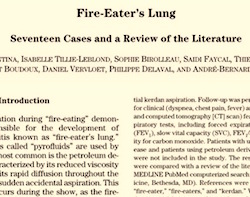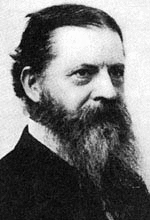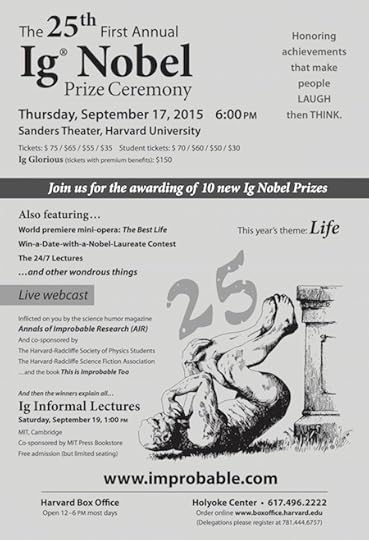Marc Abrahams's Blog, page 312
August 21, 2015
“Free personality tests are more reliable and efficient than the paid variety”
Free personality tests are more reliable and efficient than the paid variety
In most areas of life, we expect the free versions of products to be sub-standard compared with the “premium” paid-for versions. After all, why would anyone pay for something if the free equivalent were better? However, a new study of personality tests boots this logic off the park – psychologists at the University of Texas report in the Journal of Psychology that free tests are more reliable and efficient than their paid-for, proprietary counterparts.
To measure test reliability, Tyler Hamby and his colleagues dug out personality test data collected in five prior meta-analyses of the Big Five personality traits….
At least for research purposes (as opposed to in applied settings), these new results stack heavily in favour of free tests. Not only do free tests match or exceed the reliability of paid-for tests, they are also shorter which helps encourage participants to complete all test items and reduces participant drop-out rates. “Assuming that a particular scale has been properly validated, we tentatively recommend using free scales to measure Big Five traits in personality research,” the researchers said. It will be interesting to see if this finding applies to other areas of psychology research where free and paid-for tests are available.
The Journal of Psychology study itself is available only for pay. The journal’s publisher charges US $40 for the article, or US $97 for that entire issue of the Journal of Psychology.

August 20, 2015
Tyrannosaurus Rx: “The day I removed a toy dinosaur from a woman’s vagina”
The Guardian published an article called “The day I removed a toy dinosaur from a woman’s vagina“.
It’s a firsthand medical report by a student nurse who uses the pen name Poppy Ward. The article includes the image you see here, from an entity named Alamy:
(Thanks to Adam K. Olson for bringing this to our attention.)
BONUS QUESTION: Should Poppy Ward have done a more formal writeup and submitted it to a medical journal, rather than a newspaper?

The radioprotective blancmange from Saint Petersburg
A research team from Saint Petersburg, Russia, have developed the world’s first radioprotective blancmange. Professor Tamara Arsenyeva and Olga Kukushkina of ITMO University (Saint Petersburg State University of Information Technologies, Mechanics and Optics) explain their concept – a functional dairy product, contributing to a better elimination of radionuclides from the human body – in the scientific journal ИУ ИТМО, June 2015, Number 2(24) (Processes and Equipment for Food Production)
“The dessert blancmange consists of two layers. The first is a cheese mousse sugar syrup containing buckthorn extract, evenly distributed over the entire volume. The second layer is a jelly consisting of an extract of green tea and red wine stabilized natural pectin gelling agent. All components have high radioprotective properties.“
 The diagram shows the effect of concentration of the extract of green tea in taste and aroma.
The diagram shows the effect of concentration of the extract of green tea in taste and aroma.
See: [predominantly in Russian] ‘Blancmange with radioprotective fillers’. An auto-translated version [predominantly in English] is available here.

August 19, 2015
Podcast #25: Fire-eaters and punk rockers
Fire eaters, punk rocker’s lung, bad guys and their names, “A Boy Named Sue”, crook-capturing devices, manly cellphones, and wedding ring impressions all turn up in this week’s Improbable Research podcast.
Click on the “Venetian blinds” icon — at the lower right corner here — to select whichever week’s episode you want to hear:
SUBSCRIBE on Play.it, iTunes, or Spotify to get a new episode every week, free.
This week, Marc Abrahams tells about:
Fire-eaters and punk rockers. (“Paukenbelüftung durch Aufblasen eines Luftballons mit der Nase” [Middle Ear Ventilation by Blowing up a Balloon with the Nose], [article in German], S. Kaus, Laryngorhinootologie, vol. 71, no. 9, September 1992, pp. 485-6. / “Fire-Eater’s Lung,” P.E. Brander, E. Taskinen, and B. Stenius-Aarniala, European Respiratory Journal, vol. 5, no. 1, January 1992, pp. 112-4. /
 “Fire-Eater’s Lung: Seventeen Cases and a Review of the Literature,” Thibaut Gentina, Isabelle Tillie-Leblond, Sophie Birolleau, Saidi Faycal, Thierry Saelens, Laurent Boudoux, Daniel Vervloet, Philippe Delaval, and André-Bernard Tonnel, Medicine, Vol.80(5), 2001, pp. 291-297. / “Punk Rocker’s Lung: Pulmonary Fibrosis in a Drug Snorting Fire-Eater,” D.R. Buchanan, D. Lamb, and A. Seaton, British Medical Journal (Clinical Research Edition), vol. 283, no. 6307, Dec. 19, 1981, p. 1661. Featuring a dramatic reading by Chris Cotsapas.) BONUS: Here’s video of a song by the punk bank Jonathan Fire Eater:
“Fire-Eater’s Lung: Seventeen Cases and a Review of the Literature,” Thibaut Gentina, Isabelle Tillie-Leblond, Sophie Birolleau, Saidi Faycal, Thierry Saelens, Laurent Boudoux, Daniel Vervloet, Philippe Delaval, and André-Bernard Tonnel, Medicine, Vol.80(5), 2001, pp. 291-297. / “Punk Rocker’s Lung: Pulmonary Fibrosis in a Drug Snorting Fire-Eater,” D.R. Buchanan, D. Lamb, and A. Seaton, British Medical Journal (Clinical Research Edition), vol. 283, no. 6307, Dec. 19, 1981, p. 1661. Featuring a dramatic reading by Chris Cotsapas.) BONUS: Here’s video of a song by the punk bank Jonathan Fire Eater: The names of bad guys. (“Boys Named Sue: Disruptive Children and Their Peers,” David Figlio, Education, Finance and Policy, vol. 2, no. 4, 2007, pp. 376–94. / “First Names and Crime: Does Unpopularity Spell Trouble?” David E. Kalist and Daniel Y. Lee, Social Science Quarterly, vol. 90, no. 1, March 2009, pp. 39–49. Featuring dramatic readings by Jean Berko Gleason.) BONUS: Here’s video of Johnny Cash singing “A Boy Named Sue”,the song that inspired the study:
Clever contraptions to capture crooks. (“Oscar V. Hargrave’s “Means of Defense” (U.S. patent 1381301, granted 1921) / Samuel D. Goswick’s “Robber Exterminator” (U.S. patent 1500188, granted 1924) / Ernest English’s “Burglar Trap” (U.S. patent 1607066, granted 1926). Featuring dramatic readings by Andrew Berry .)
Soft Is Hard. (“Mobile Phones as Lekking Devices Among Human Males,” J.E. Lycett and R.I.M. Dunbar, Human Nature, vol. 11, no. 1, 2000, pp. 93-104. / “Human Mate Choice and the Wedding Ring Effect: Are Married Men More Attractive?” Tobias Uller and L. Christoffer Johansson, Human Nature, vol. 14, no. 3, 2003, pp. 267-76. Featuring dramatic readings by Daniel Rosenberg .)
The 25th First Annual Ig Nobel Prize ceremony (and webcast).
The mysterious John Schedler perhaps did the sound engineering this week.
The Improbable Research podcast is all about research that makes people LAUGH, then THINK — real research, about anything and everything, from everywhere —research that may be good or bad, important or trivial, valuable or worthless. CBS distributes it, both on the new CBS Play.it web site, and on iTunes and Spotify).

August 18, 2015
The special DOGS (and Cats) issue is out!
 The special DOGS (and Cats) issue (vol. 21, no. 4) of the magazine (the Annals of Improbable Research) is now out!
The special DOGS (and Cats) issue (vol. 21, no. 4) of the magazine (the Annals of Improbable Research) is now out!
Articles include:
“Cats and Dogs Research Review“
“Ig and Beyond: Dogs on Faces, Mice on Art“
“AIR Vents (letters from our readers)“
…and more, more, more, including new helpings of “Improbable Medical Review”, “Boys Will Be Boys”, “Soft Is Hard”, and other outstandingly improbable research snippets from many fields and countries.
We encourage you to subscribe.
Mel (right) says it’s swell.
This special DOGS (and Cats) issue nips at the heels of the special CATS (and Dogs) issue.

Marie Curie, radium, and cows lying down and standing up
Wim De Villiers, Rector and Vice-Chancellor of Stellenbosch University, says:
And in all aspects we have to maximise our social impact…. research must be relevant and meaningful. This refers to its applicability and usefulness.
Let me provide examples. In 1903, Marie Curie was awarded a Nobel Prize in Physics together with her husband, Pierre, and fellow researcher, Henri Becquerel.
But Marie had written up the bulk of the research in her doctoral thesis earlier that same year – the same output that earned her a second Nobel Prize – this time for Chemistry, in 1911 – for discovering two new elements, radium and polonium.
Now, there is another award which sounds quite similar – the Ig Nobel Prize, designed to make people laugh but also think. Take the Ig Nobel Probability Prize that went to Tolkamp, Haskell, Langford, Roberts and Morgan in 2013 for making two related discoveries.
First, “that the longer a cow has been lying down, the more likely that cow will soon stand up”. And second, “that once a cow stands up, you cannot easily predict how soon that cow will lie down again”.
Their research sounds silly, but it was published in 2010 by Elsevier in Applied Animal Behaviour Science, a reputable international journal reporting on the study animals managed by humans. We might consider it trivial, but dairy and cattle farmers would probably find it useful – not to mention animal rights campaigners who might want to take them on!
This is part of an article in the Cape Times, on August 17, 2015, with this attribution: “Professor De Villiers is Rector and Vice-Chancellor of Stellenbosch University (SU). This article is based on his talk at the annual academic day of SU’s Faculty of Medicine and Health Sciences on August 13.”

August 17, 2015
The Enigma of the Two Phonebooks, pulled apart
Here’s a reported answer to a question only old people — people old enough to know what a “telephone book” is — will understand. Here’s video of the question:
And here, the suggested new answer:
“The Enigma of the Two Interleaved Phonebooks,” Hector Alarcon, Thomas Salez, Christophe Poulard, Jean-Francis Bloch, Elie Raphael, Kari Dalnoki-Veress, and Frederic Restagno, arXiv:1508.03290v1, August 13, 2015. The authors, at CNRS & Universite Paris-Sud, PSL Research University, and Universite de Grenoble Alpes, in France, and at, McMaster University in Canada, report:
“Many of us are familiar with a classical demonstration of the strength of friction: take two phonebooks, interleave their sheets and try to separate them by pulling on their spines. This demonstration has been carried out spectacularly by attempting to pull the books apart with people, trucks, lifting a car, and even two military tanks, only to fail and suggest that the inner friction between these sheets prevails…
“[We] study the force needed to separate two books as a function of the number of sheets, the thickness of the sheets, and the interleaving distance. In particular, we show that the force required to separate the books increases more than exponentially with the number of sheets. The strength of the system is to be due to the operator: the person, car, truck, or tank, amplifies any small friction arising from the normal force acting on the boundaries of the stack.”
Here’s further detail from the study:
The arXiv blog has a nice writeup of that writeup, with the headline “Physicists Solve the Mystery of Interleaved Phone Books — Try pulling apart two interleaved phone books and you’ll inevitably be defeated by huge frictional forces. Just how these forces arise has been a long-standing mystery… until now.”
Mythbusters had a go at the problem, back in 2009:
(Thanks to Jennifer Ouellette for bringing this to our attention.)

Wining, dining and whining
 “There’s no such thing as a free lunch” runs the old adage. But is there? And/or, should or shouldn’t there be? Similar questions are addressed in a new paper from Benjamin E. Hermalin, (Thomas and Alison Schneider Distinguished Professor of Finance and Professor, Department of Economics at the Haas School of Business, University of California, Berkeley, US) in a new paper for The Journal of Law, Economics, & Organization, entitled: Why Whine about Wining and Dining?
“There’s no such thing as a free lunch” runs the old adage. But is there? And/or, should or shouldn’t there be? Similar questions are addressed in a new paper from Benjamin E. Hermalin, (Thomas and Alison Schneider Distinguished Professor of Finance and Professor, Department of Economics at the Haas School of Business, University of California, Berkeley, US) in a new paper for The Journal of Law, Economics, & Organization, entitled: Why Whine about Wining and Dining?
The professor discusses the pros and cons of such business practices, their legality, and potential advantages or disadvantages to the firms concerned – concluding:
“This paper provides a rationalization for firms funding their managers wining and dining (more, generally, gift or favor exchange): wining & dining, even when itself the source of agency problems, can be a less expensive way for firms to induce their managers to cooperate with each other than utilizing standard incentive contracts. In particular, because the managers can observe what the firms’ owners cannot, delegating to the managers the authority to make discretionary transfers to each other allows the owners to avoid or reduce the informational rents they would otherwise be stuck paying their managers.”
Also noting that :
“[…] wining & dining need not be taken literally; in particular, there are far more valuable gifts (e.g., positions on boards of directors, employing family members ) that can be bestowed.”
Note: A version of the paper is available in full here.
Question (optional): ‘The second comma in the journal’s title is redundant – discuss.’

Next month: the 25th First Annual Ig Nobel Prize Ceremony
The 25th First Annual Ig Nobel Prize ceremony happens one month from today. On Thursday, September 17, 2015, come to the Ig Nobel ceremony at Harvard if you have tickets, or watch the live webcast here at Improbable.com.

August 16, 2015
A ritual monster of Spain has a long abstract
A scholarly paper about a ritual monster of Spain appears to have a monstrously loooooooooong abstract, which you can see if you click the link on the title:
“Tarasca: ritual monster of Spain,” David D. Gilmore, Proceedings of the American Philosophical Society, vol. 152, no. 3, September 2008, pp. 362-82. The author is at Stony brook University.

Marc Abrahams's Blog
- Marc Abrahams's profile
- 14 followers








